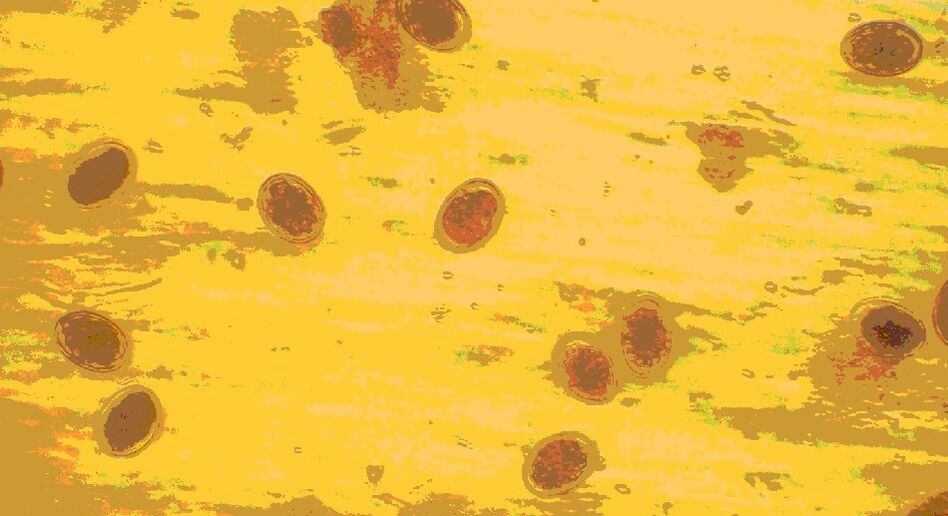
roundworm infection
roundworm eggs
- rash;
- Choking and coughing (sometimes bloody);
- muscle spasms;
- joint pain.
Where to go if worms are suspected?
pinworm infection
pinworm eggs
- Itching in the rectal exit area;
- diarrhea;
- nausea;
- Sudden weight loss;
- Flatulence.
Folk remedies for treating parasites
Whipworm
whipworm eggs
Diagnosis of helminthiasis
- Scrape from the area near the anus;
- Use ELISA, PCR, RNGA and other methods for blood testing;
- Be sure to do blood biochemistry and CBC;
- To determine the location of the parasite, ultrasound, MRI, and CT are performed in some cases;
- In order to diagnose the migratory stages of the worms, X-rays are taken.
Trichinella spiralis
- swelling;
- Fever status (high temperature, pain, discomfort);
- Irregular bowel movements with constipation or diarrhea.
tapeworm
tapeworm eggs
- nausea and vomiting;
- Intestinal problems (constipation or diarrhea);
- Loss of appetite or excessive hunger.
Harm to the body
Cattle and pork tapeworms
bull tapeworm
- persistent hunger;
- nausea and vomiting;
- weakness;
- lose weight;
- diarrhea;
- Itching in the anal area as the segments fall off.
Classification
- Filariasis. Parasites live in lymph nodes
- Cysticercosis. Areas of the brain affected by worms
- Hydatid disease. Worm infection diagnosed in liver
- Paragonimiasis. Parasites live in the lungs
Fluke
Burbot liver has parasites
How to tell if there are bugs?
What can the naked eye see?
- rapid weight loss;
- Intestinal disorders: Diarrhea replaces constipation;
- Severe itching of the anus;
- Rash of unknown cause;
- stomach ache;
- flatulence;
- Loss of appetite;
- An inexplicable craving for sweets;
- Sometimes adults cannot control their appetite;
- Frequent colds due to reduced body resistance.



























